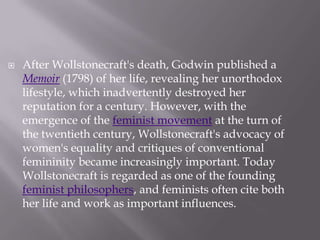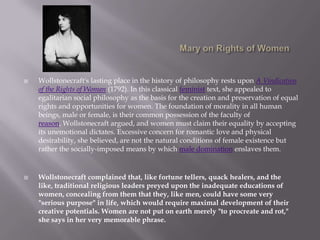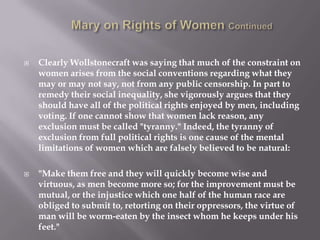Mary Wollstonecraft was an 18th century British writer and early feminist philosopher. She is best known for her work A Vindication of the Rights of Woman, in which she argues that women are rational beings who should receive an education equal to men. She believed that women appear inferior to men only because they lack education, not because of any innate deficiency. Wollstonecraft felt that women deserve the same fundamental rights as men and should not be confined solely to a private domestic sphere. Her ideas had a significant influence on feminism and the women's rights movement in later centuries.














